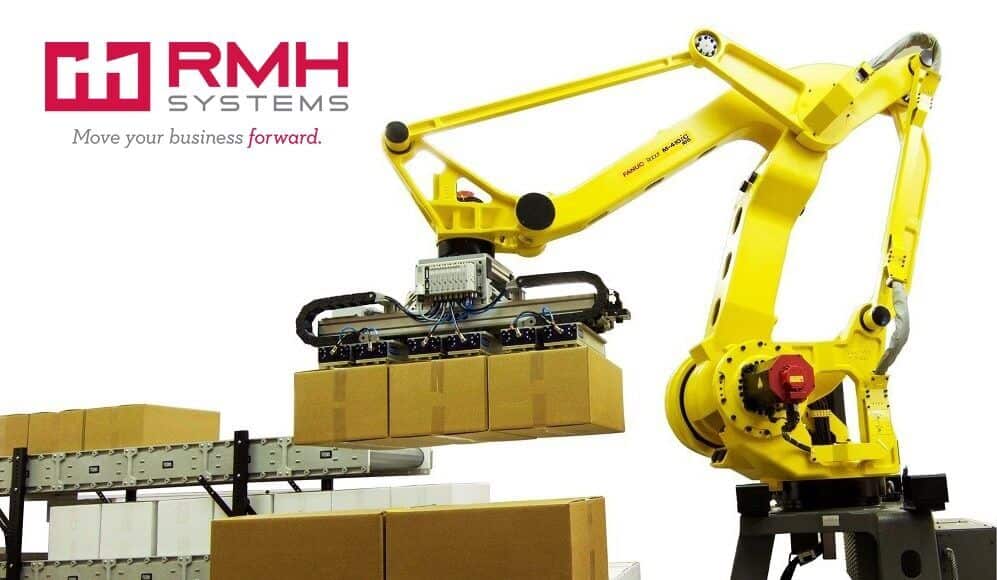
Robotic palletizing systems are complicated. Robots are used in warehouses across the country to repeat the same function over and over again, which seems simple enough. However, there are a number of items to consider during your palletizing robot project, from scope to implementation. If you and your robotics systems integration partner don’t discuss the following items, you will have some headaches in your future. Here are 10 things to consider with palletizer design and robotic palletization systems:
-
Rate
Rate is the most influential aspect of robotic palletizing systems. Rate will dictate the conveyor speed, the case erecting and case sealing requirements, the palletizing robot arm (also known as end of arm tooling or EoAT), robot model, etc. Before you scope a palletizing robot, know your goals, and understand what rates you must hit to meet your demands.
-
Pallet Quality
Pallet quality is a commonly overlooked aspect to this process. There is a lack of globally accepted pallet dimensions. At any given site, pallet quality will range widely on the same production line. The environment can play a big role in that. Wet environments can cause wet wood swell, while cold environments can cause wood shrinkage. A pallet’s size can impact the quality of the load, and the safety of the operation. If a pallet is too tall, the cases will be squished together as its loaded. If a pallet is too short, the cases will be dropped from a height greater than what the system is designed for. Make sure you know your pallet size, make sure you standardize your pallets, and make sure you dispense your pallets at a rate that will allow you to hit your case rate.
-
Environment
As mentioned above, the production environment plays a big role in the design of this type of system. These systems, and the equipment involved, will be completely different depending on the type of environment in which they are located. Environmental conditions impact the pallets, the EoAT strategy and equipment, the robot model, the case quality, etc.
-
Case Quality
A box is a box, right? No. All boxes are different–thickness, strength, etc. Systems are designed based off of case dimensions and tolerances. If you do not have accurate case dimensions, the EoAT will not be able to accurately pick the cases as designed. This means palletizing robot programming changes, and likely, equipment changes. Those changes cost significant time and money.
-
Case Sealing
The method in which cases are sealed will have an impact on the application. Your EoAT will be dependent on whether you use glue or tape, and more specifically, the strength of the glue or tape you use. These cases are being picked with a clamp or air suction. If your case sealing commodities can’t handle the pressure, then they shouldn’t be in the case sealer.
-
Product Lists
How many SKUs will be running through this system? Many times, there are multiple SKUs running through a system. You will want to have multiples of each SKU ready for testing, which means they need to be identified at the front end of the project to insure the right equipment is purchased, and the right programming is applied. Sophisticated systems can palletize multiple SKUs with different dimensions, but those dimensions must all be known, and tested.
-
Infeed/Outfeed Integration
Many robotic integrators know how to program a robot and place it in your production line. Palletizing robot programming to repeat a cycle is fairly simple. It’s getting that robot to talk to and work within the rest of the system. Conveyor, stretch wrapper, print and apply, case sealers, WMS, PLC, etc. Find a partner that can sync all these components together.
-
Slip Sheets
Slip sheets are pretty common for palletizing robot systems. Your team needs to make sure you have the correct size of slip sheet, and you must understand the impact that the environment will have on the slip sheets. If the slip sheets warp, the system fails. There must be a process designed for getting slip sheets into the palletizing unit as well. Everyone focuses on getting the product through the system, but we need to get slip sheets into the system too.
-
Outfeed Process
What’s the process for getting pallets out of the system? Typically, pallets will be stretched wrapped, but given space or process constraints, that may not all be automated in the same system. Teams need to make sure they have a process for pallet outfeed, and that process can match the rates of the palletization.
-
Training
It’s always wise to make sure you have some onsite training included for your team. We’d also recommend designating a system champion to help guide other team members. This should be someone that will be working on that line alongside the palletizing robot.